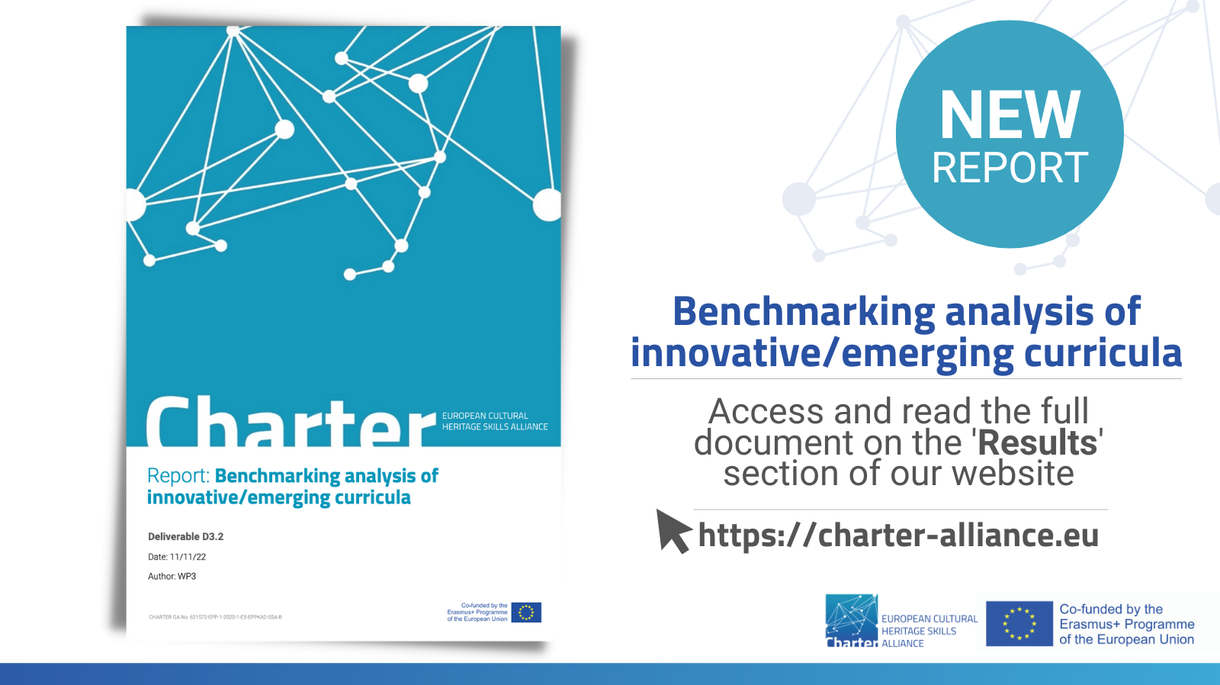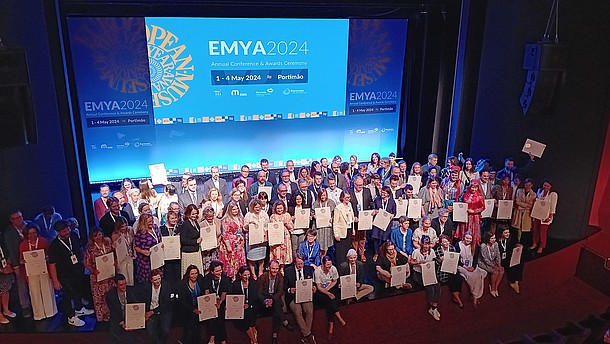The report explores what makes curricula innovative and/or emerging by identifying elements that constitute innovation in cultural heritage education and/or which can be used to describe curricula in emerging cultural heritage contexts. These elements are expressed in the report as indicators, which will set the groundwork for the WP to produce the guidelines for innovative/emerging vocational education and training (VET) and higher education (HE) and continuing education and training (CET).
The report is the result of an internal survey conducted among CHARTER consortium members and a literature review on papers that contribute to the study of innovative or emerging curricula for the cultural heritage sector, including sources such as Voices of Culture (VoC) report, publications by the UK innovation agency NESTA, and from relevant OECD, UNESCO and EU publications linked to the creative industries.
In order to provide an objective benchmarking, a series of formal indicators were selected. These include the education sector, types of education and training, format, length, credits, NQF/EQF levels, etc. To fully grasp the elements that define and shape an innovative or emerging curricula, a set of three clusters of qualitative indicators were designed:
- General innovation/emergence-related indicators, including relevance for society/market, novelty and accessibility/awareness.
- Structural elements, such as the delivery format, work-based learning opportunities and collaborative elements.
- Content elements, evaluating trans-interdisciplinarity, heritage core/transversal skills, sustainability, digitisation, etc.
About CHARTER
The European Cultural Heritage Skills Alliance CHARTER, brings together and represents the whole range of the cultural heritage sector in Europe. NEMO is one of 47 project partners who together strive towards making apparent the value of cultural heritage and creating a resilient and responsive sector.
CHARTER works towards creating a lasting, comprehensive strategy that will guarantee Europe has the necessary cultural heritage skills to support sustainable societies and economies.





